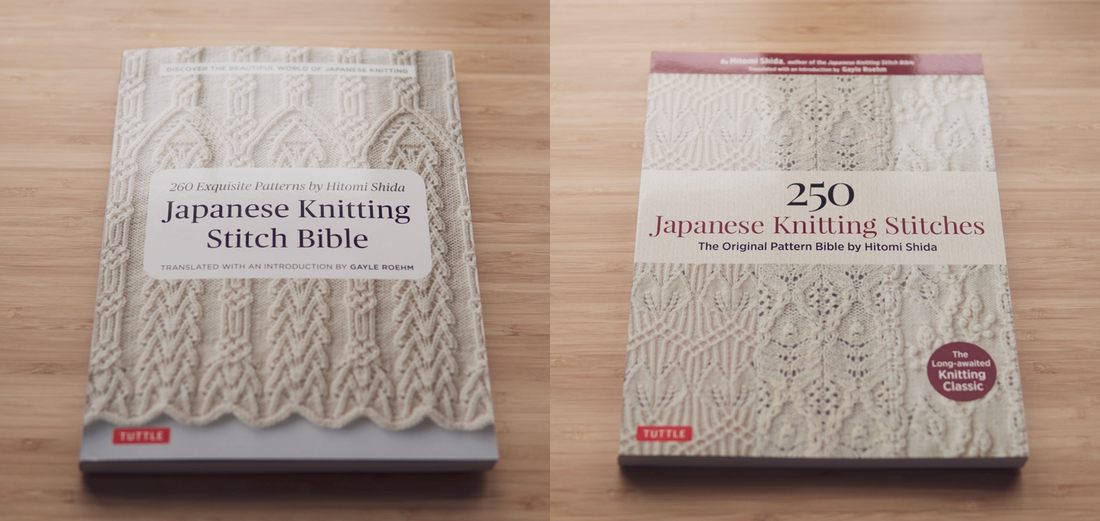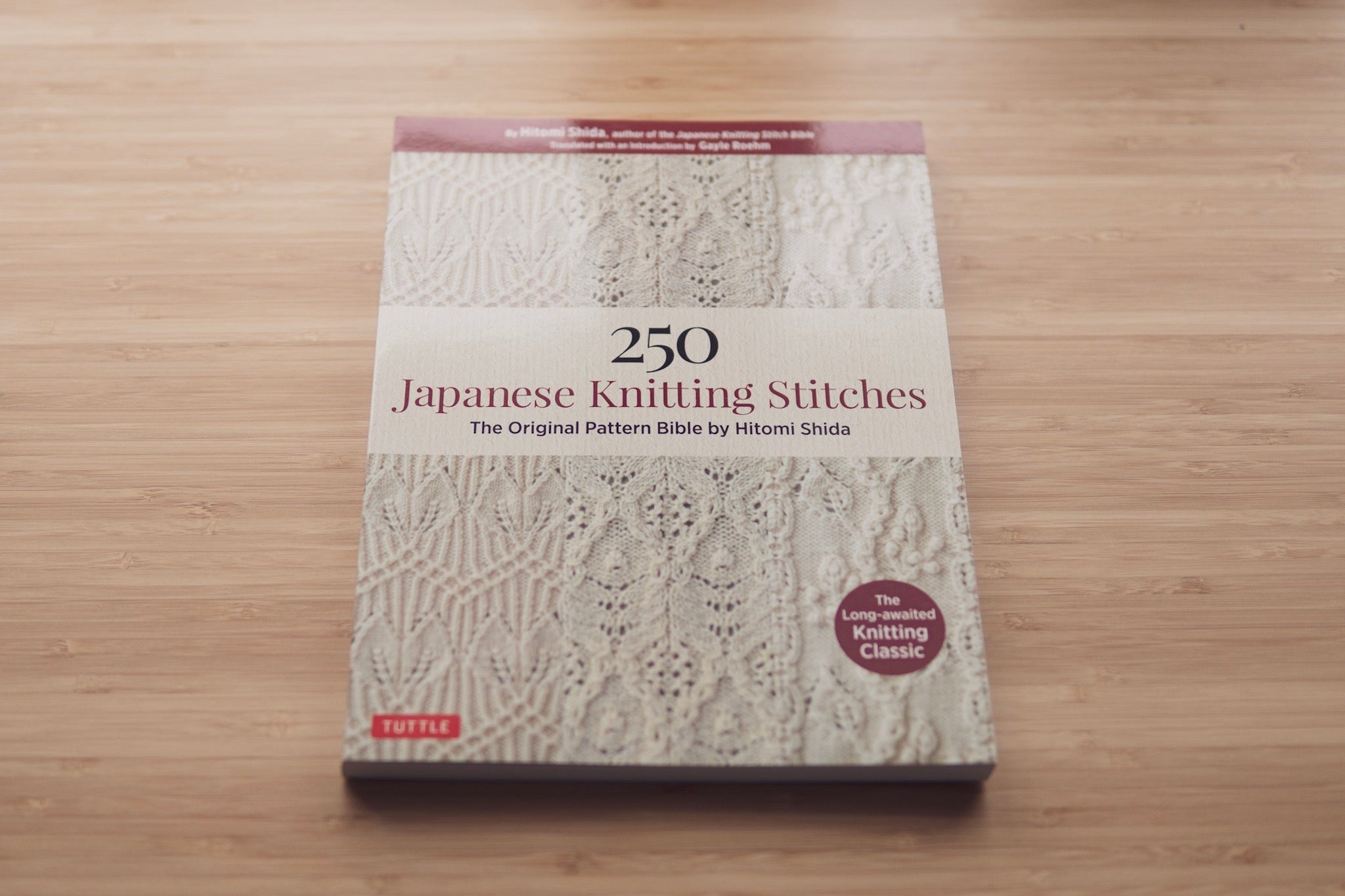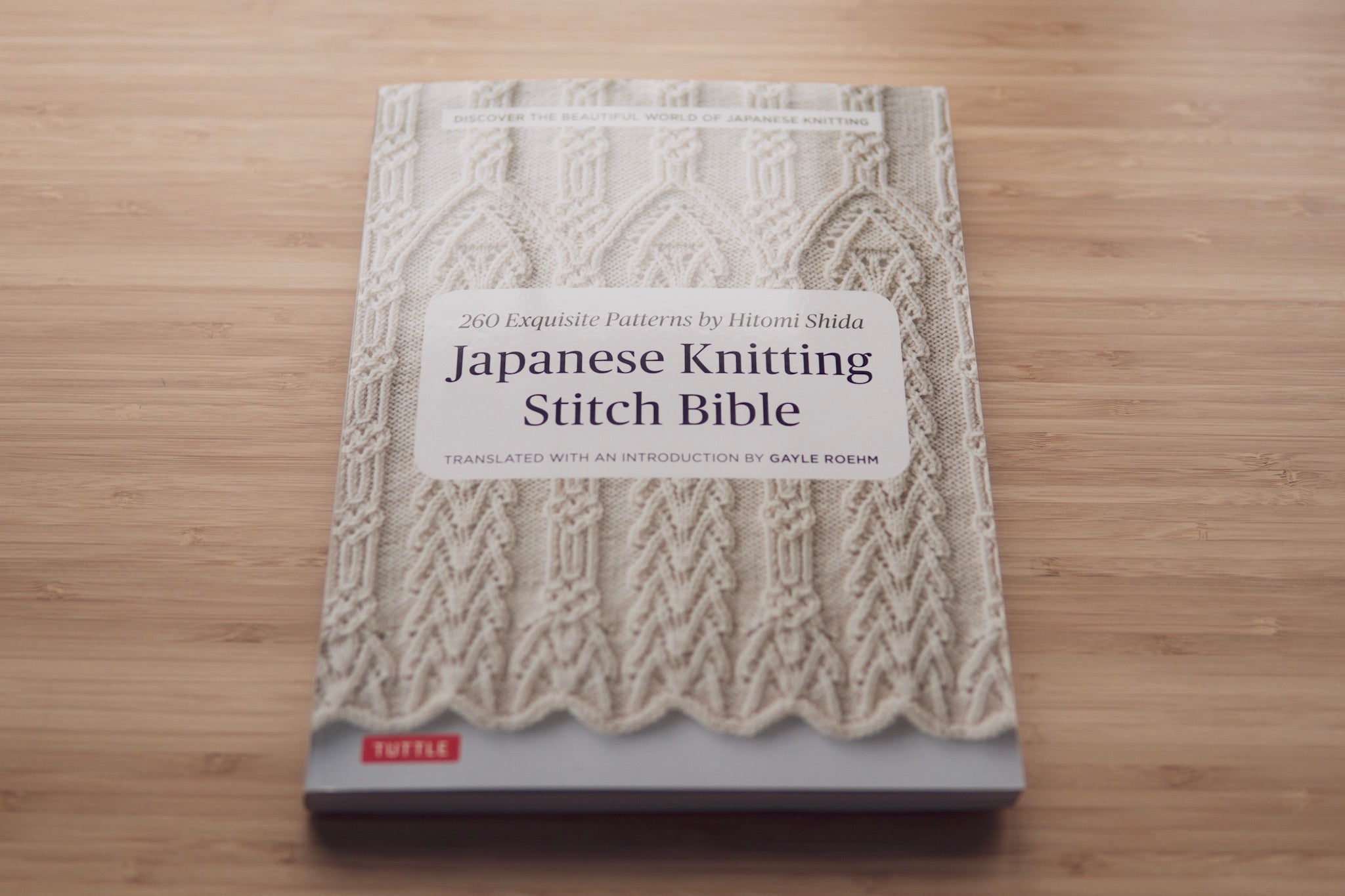It's a treat for me to get to talk about two new books in my library: Japanese Knitting Stitch Bible and 250 Japanese Knitting Stitches by Hitomi Shida and translated by Gayle Roehm.
Japanese knitting stitch books are a gold standard of knitting stitch charts. These books are consistent, precise, and innovative. And they are beautiful to look at, with beautifully lit photographs and muted colours of yarn. A Japanese stitch pattern books is a knitter’s equivalent to a candy shop.
If you’re a fan of Japanese knitting books, you might have invested in some in the past. And a lot of the Japanese knitting books that are available online are wonderful, but they aren't translated. This isn't always a barrier, because these books are visual and illustrated with understandable explanations. So I always managed to muddle through the charts. But these translated books editions of two classic Japanese knitting stitch books from Tuttle are a great addition.
About the author, Hitomi Shida
“Hitomi Shida didn’t set out to become a hand knitting designer. She began training as a nurse, but her studies were interrupted by a serious bout of illness. During her long recovery, she was introduced to machine knitting, and qualified as an instructor. She later turned her attention to hand knitting.” She debuted as a knitting designer in 1990 and has designed for yarn companies and magazines, as well as writing knitting books. “She’s now one of japan’s best-known and most respected hand knitting designers, and her work defines “Japanese knitting” for many knitters.”
About the books
250 Japanese Knitting Stitches was originally published in Japan in 2005, and hasn’t been easy to buy before this new edition.
Japanese Knitting Stitch Bible is the 2015 companion to the 2005 collection, with another 260 original stitch patterns.
Each book has:
- 250+ knitting stitch patterns.
- Detailed introduction which I recommend you take the time to read. It has one of the best explanations of how to read knitting charts that I’ve ever read. It explains row and stitch repeats, working flat, working in the round, and more.
- Every symbol that is used in the charts is standard for Japanese knitting charts (and most of them are standard for Western knitting charts). And there are a lot of symbols; almost 250! (I counted them). So the book is also a great reference for charts.
- Each symbol has step by step instructions for executing it. And more complex symbols have visual illustrations to support them.
The knitting stitch patterns
Lacy and openwork pattterns
Most are highly textured, quite often combining twisted stitches and cables with yarn overs. The lace here is worked in yarn with some heft to it; unlike more ethereal lace—Shetland and Estonian lace, say—these are densely patterned with an etched and sculpted aesthetic.
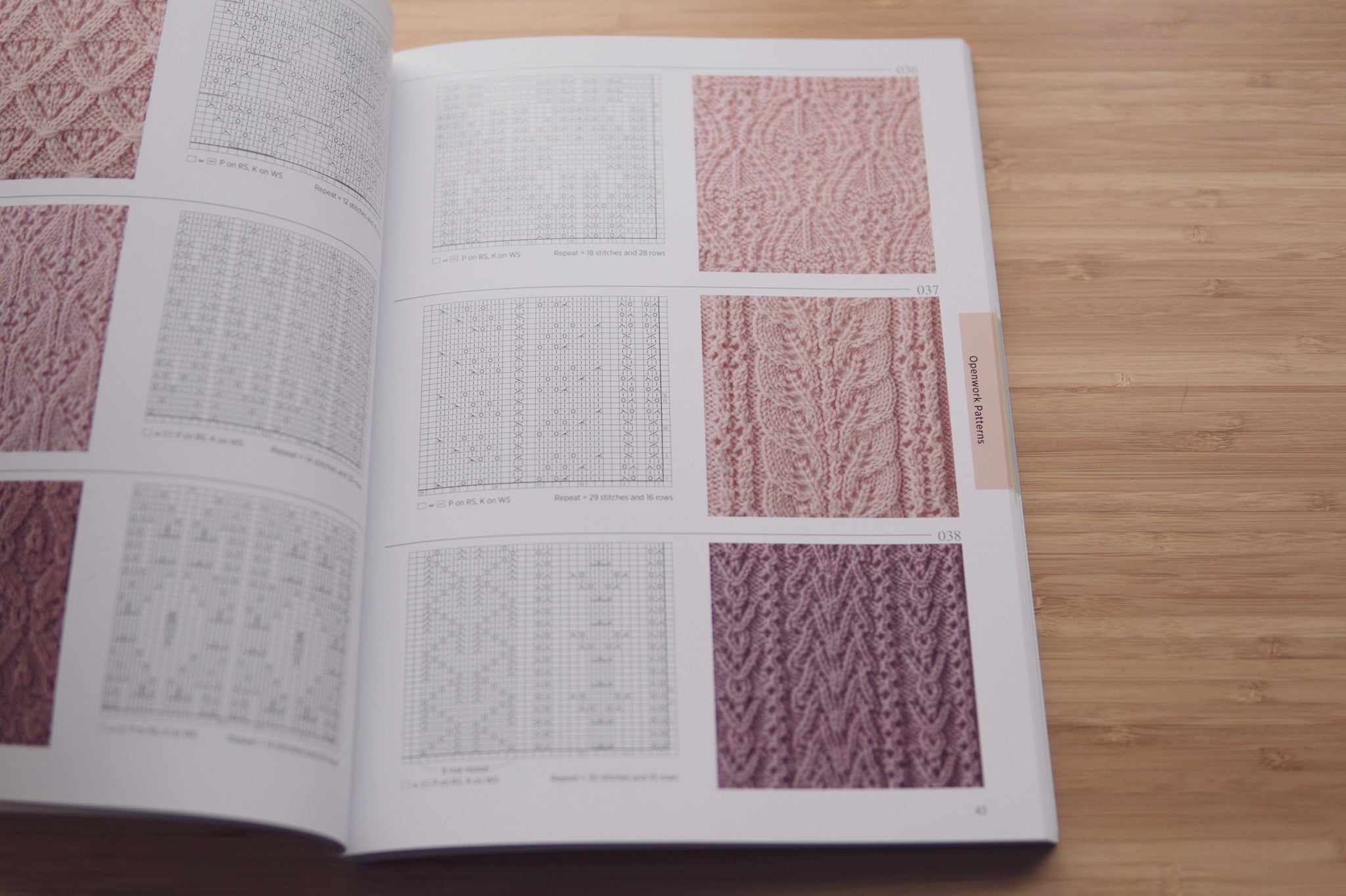
Cable patterns
Columns of stitches in different widths twine and travel across the fabric. These are deeply textured patterns that combine cables, mock cables, and twisted stitches.
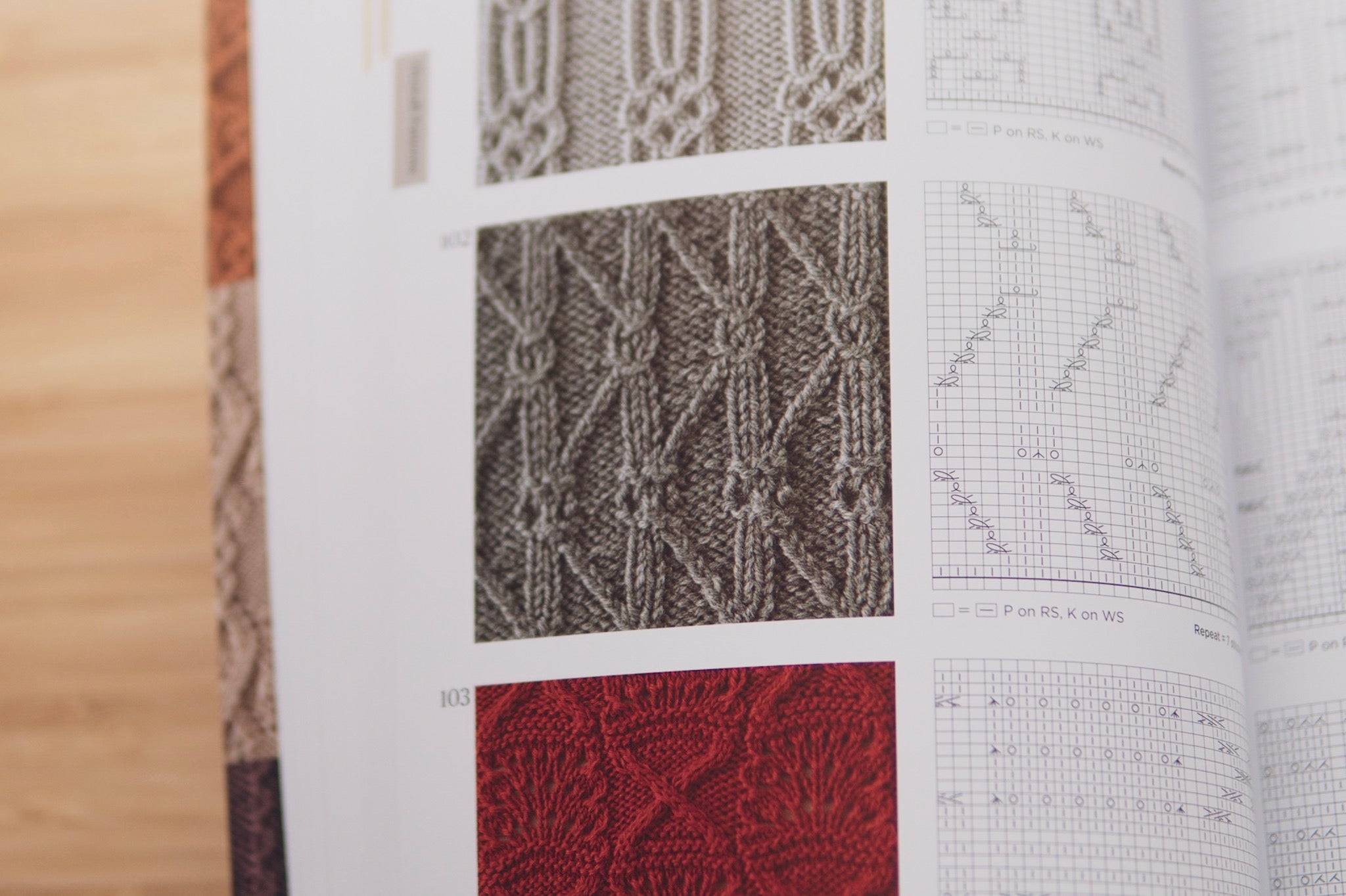
Panel patterns
Vertical patterns are great for filling in between cables or textures, or ornamenting the edge of a button band.
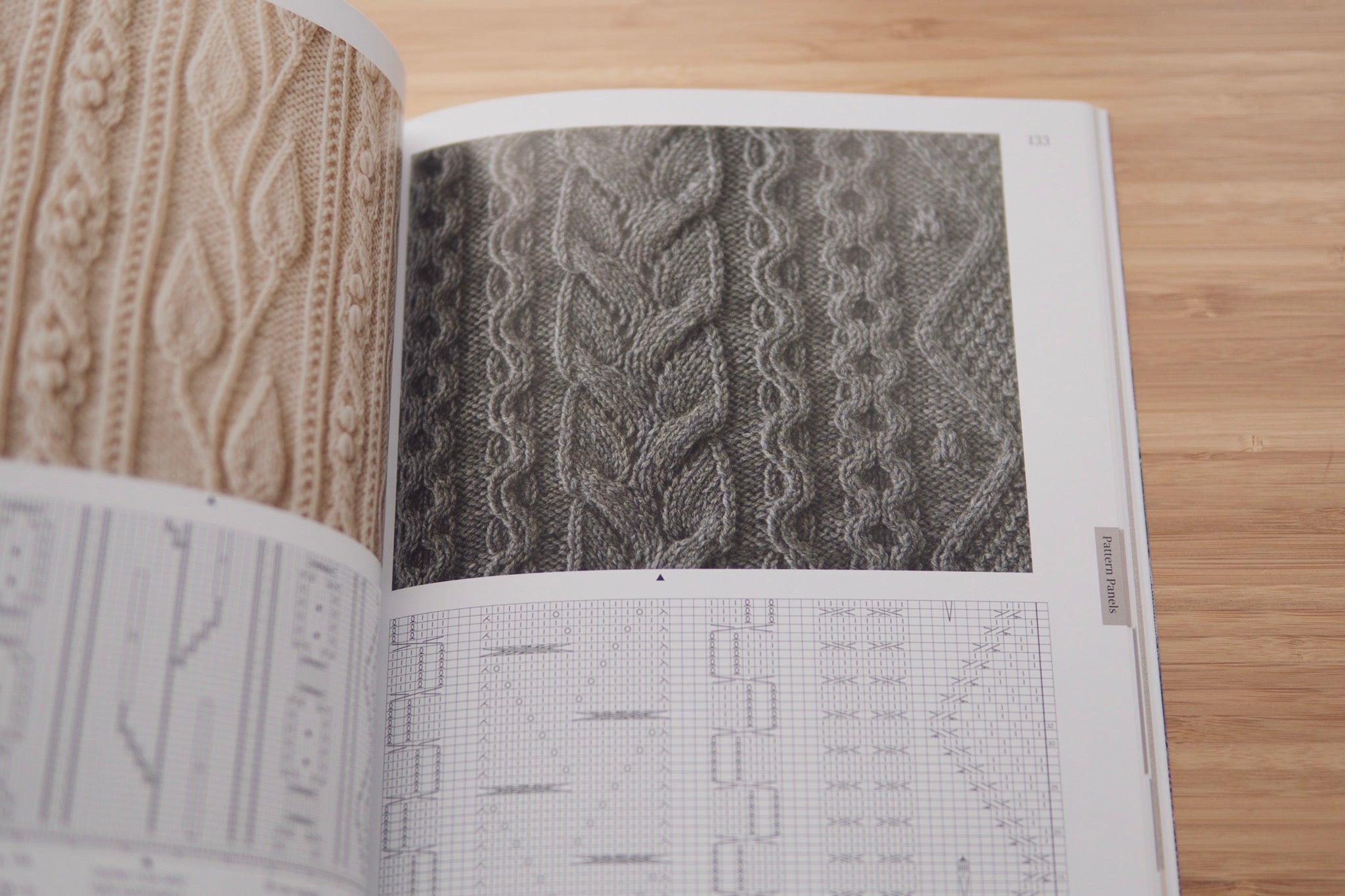
Combinations and arrangements
I love this about the books. Combining stitch patterns is an art itself, and Shida gets you started.
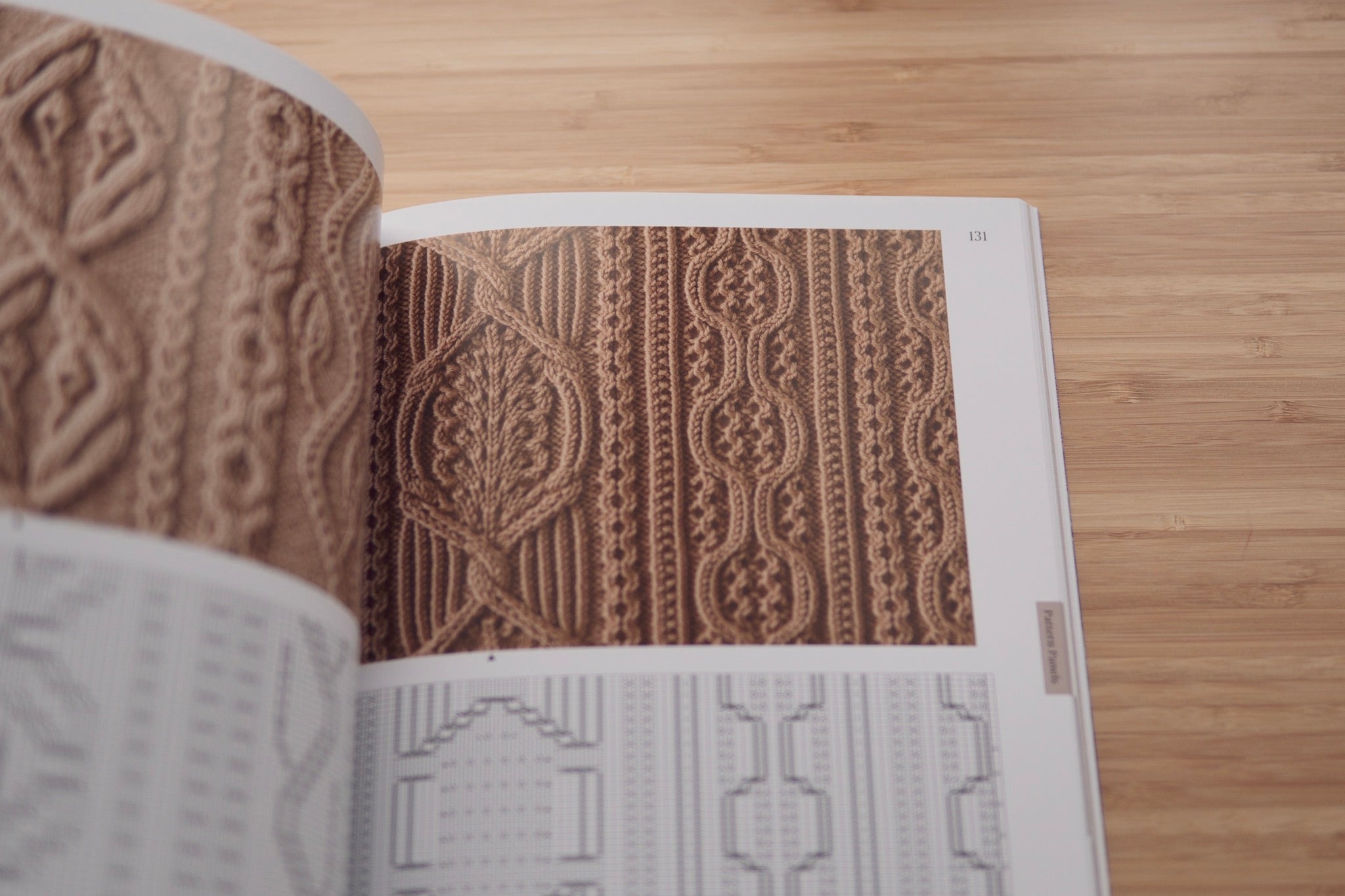
Round yokes
In the Knitting Stitch Bible, there’s a selection of 15 Round yokes - this is a really nice touch, and not something that you typically find in stitch pattern books. Designing round yoke knitting charts is quite challenging because the stitches need to morph as the stitch count decreases. The 15 patterns in the Stitch Bible are beautiful as is, or you could use them as a starting point and adapt them for your own needs.

Edging patterns, horizontal and vertical
Edging patterns are really versatile. You can dress up plain knitting with and edging; at the edge of a sweater, hat or shawl. Or you can use an edging pattern as an all over pattern on a scarf.
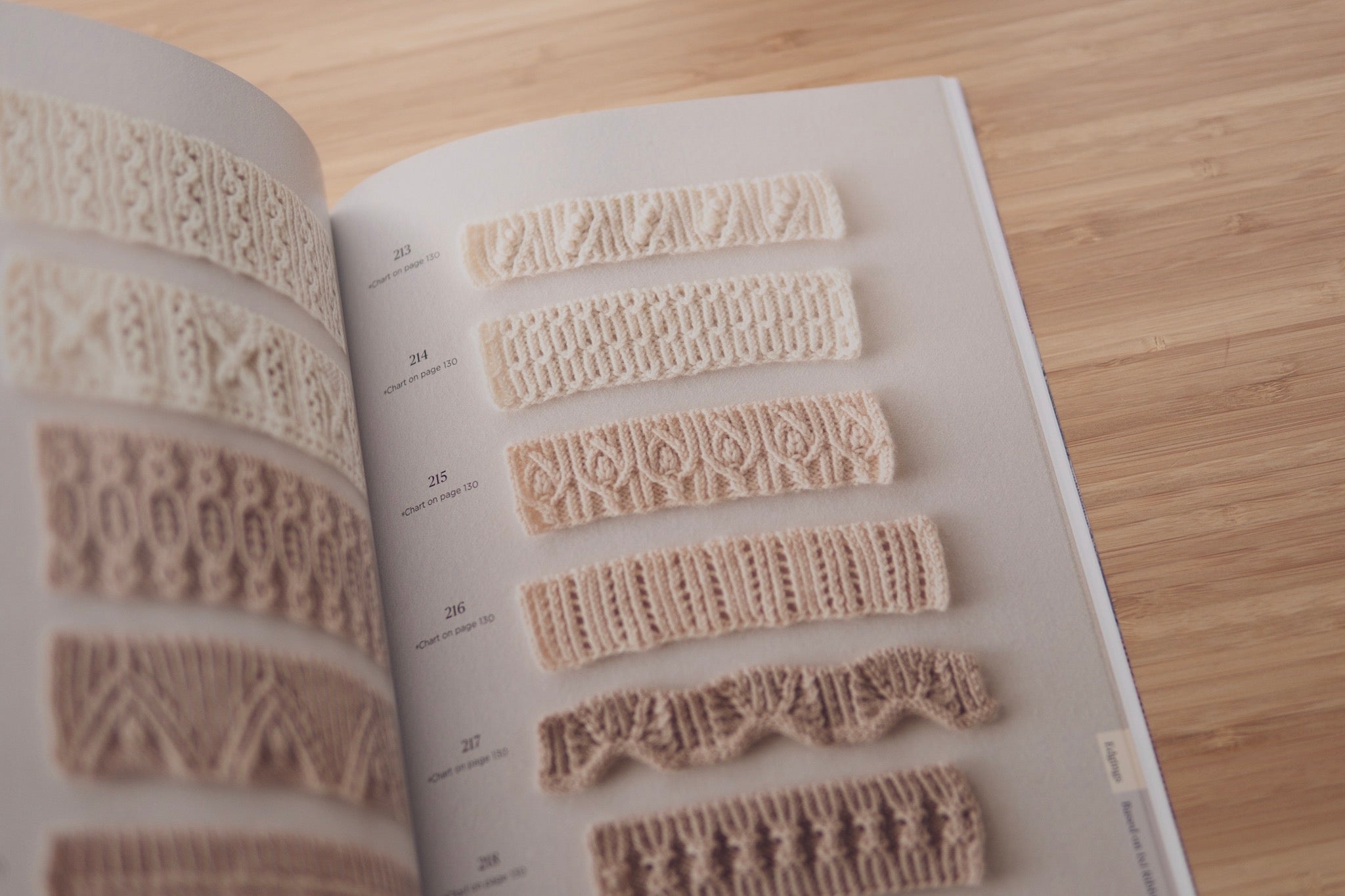
Full patterns
The Knitting Stitch Bible includes full patterns as well; there’s a scarf, fingerless mitts, socks, hat, and a collar.

What can you do with the books?
In my opinion, these books are just great for getting inspired. You can flip through and see how a colour of yarn looks knitted up. Or get inspired to swatch something new without committing to a large knitting project.
These books are indispensable for the knitter keen to learn to knit from charts or how to combine different techniques. And they are a rich resource if you are a knitting designer, whether for fun or publication.
And I can’t imagine there’s any knitter who wouldn’t learn something new from either of these books.
I love these books as a source of design ideas to add textured elements to my projects. I’ve written more about how to use knitting stitch pattern books in a blog post. Add one of the patterns from either 250 Japanese Knitting Stitches or Japanese Knitting Stitch Bible to a yoke, a panel on a sweater on a cardigan, a pocket, a pillow. Or swatch up a bunch and sew them into a blanket.
Where to find the books
They seem to be widely available, in paperback, and at a reasonable price. They’re on Amazon, Barnes and Noble, and Indigo, and you can probably ask your local yarn or book store to bring them in.
